How to Run Electrical Wire in Unfinished Basement (Guide)
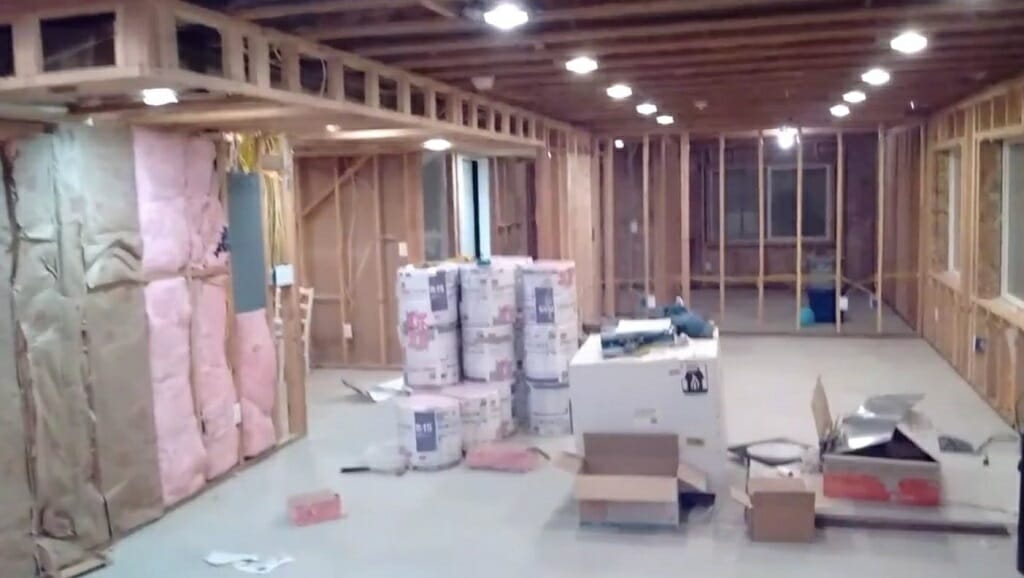
Before starting on the electrical wiring in your unfinished basement, there are several decisions to make. For instance, you have to decide which space is more suitable for the sub-panel, amperage of the panel & the breakers, and location of the outlets, lights, and switches. After deciding the above things, wiring the unfinished basement won’t be hard. You’ll get a better idea of all the steps required with this guide on how to run electrical wire in the unfinished basement.
In general, for a proper basement wiring process, follow these steps.
- First, clean the basement and mark the wire’s path.
- Install the sub-panel for the unfinished basement.
- Drill the studs according to the wire size.
- Run the cable from the outlets, switches, and lights to the sub-panel.
- Run wires on the exposed wooden beams of the ceiling.
- Install the lights, switches, outlets, and other electrical devices.
- Connect the wires to the breakers.
That’s it. Now your unfinished basement wiring is completed.
Before You Start
Whenever wiring a basement, you are starting the wiring process from scratch. So, you need to prepare everything. First, preparing a good layout is a must. Take a notepad and pencil and mark all the switches, outlets, and lights on that notepad. For instance, having a proper plan allows you to buy everything you need as early as possible. Buy the right amount of wires, outlets, switches, and light fixtures. Also, remember to choose the correct gauge wire.
Depending on the load and distance, pick the correct wire gauge. Try to go with at least 14 gauge and 12 gauge wires. For 15 amp and 20 amp breakers, 14 and 12 gauge wires are excellent choices.
8-Step Guide on How to Run Electrical Wire in Unfinished Basement
Things Needed
- Drill
- Hand Saw or power saw
- Wire cutters
- Plastic wire nuts
- Electrical tape
- Stud finder
- Voltage tester
- Wire strippers
- Spirit level
- 100A Sub panel
- Outlets, switches, lights, and wires
- Conduits, J hooks, staples
- Screwdriver
Step 1 – Prepare the Basement
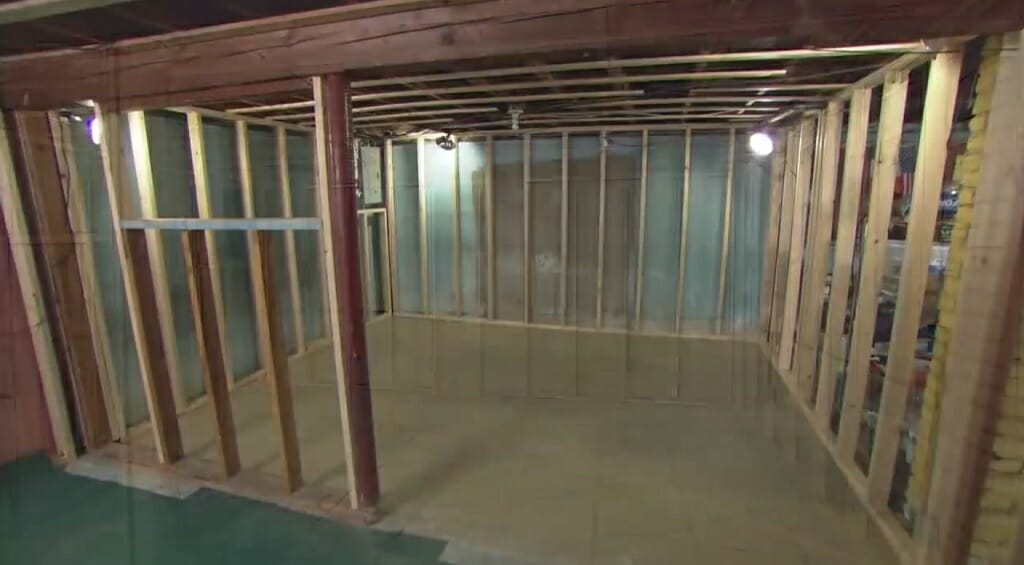
First, you should arrange the unfinished basement for wiring. Clean dust and debris that is in the basement. Remove any obstruction that might block the wire’s path. After cleaning the basement, mark the route of the wires. Remember to choose a suitable room for the sub-panel. Choose a room closest to the main power line you plan to connect to the basement.
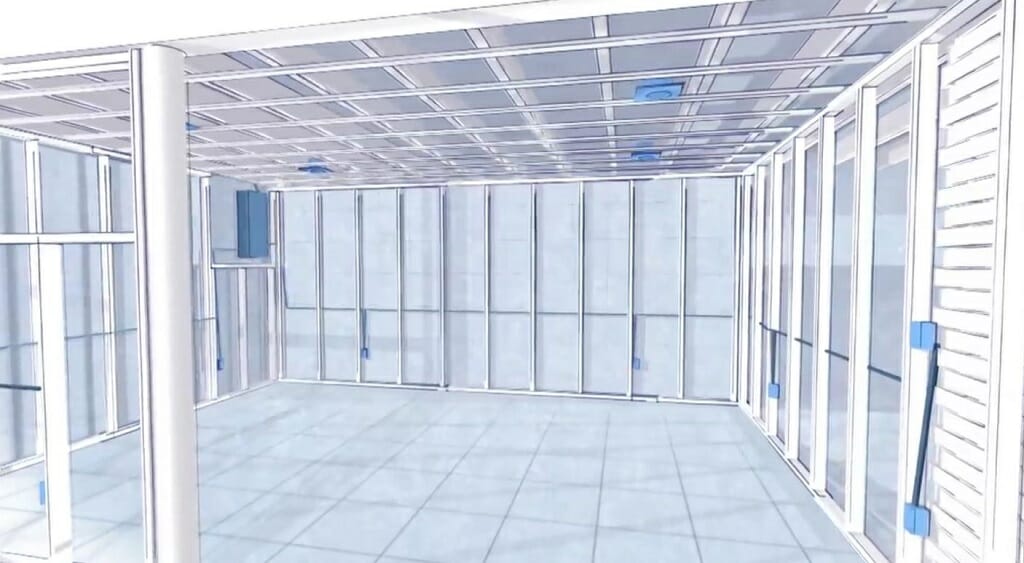
Most of the time, your basement might have all the studs and joists installed. If so, your job is a little easier. Mark all the required locations on those studs and joists. Then, start the drilling process. Use the right size of drill bits for this. You might have to use one size of bit for wires and another for electrical boxes.
However, if the basement does not have studs and joists installed yet, you’ll have to install them before starting the basement wiring. It is nearly impossible to install studs and joists after the wiring is completed. Also, you should install the roof beams and wall plates before the wiring, given that you plan to run wires on those beams. If all the above requirements are met, you can move on to step 2.
Step 2 – Install the Sub Panel
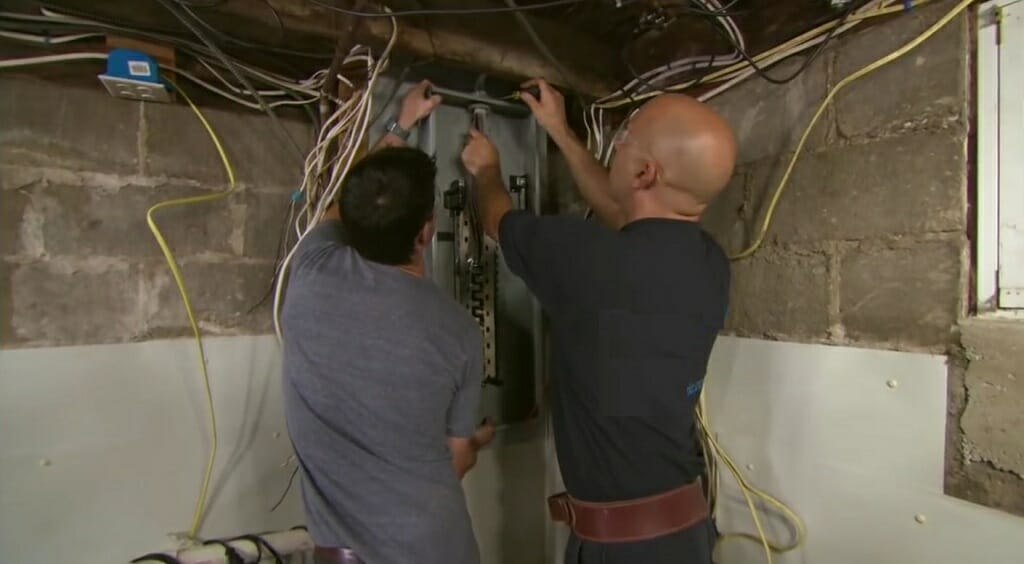
Now it is time to install the sub-panel. For most basements, a 100A sub-panel is more than enough. However, if you want more power, choose a 200A sub-panel. It all depends on the load calculation. We’ll talk about that later. For now, pick a 100A sub-panel. Then get the supply line for that sub panel from your main line. Remember to use the correct size cable according to the distance and amperage.
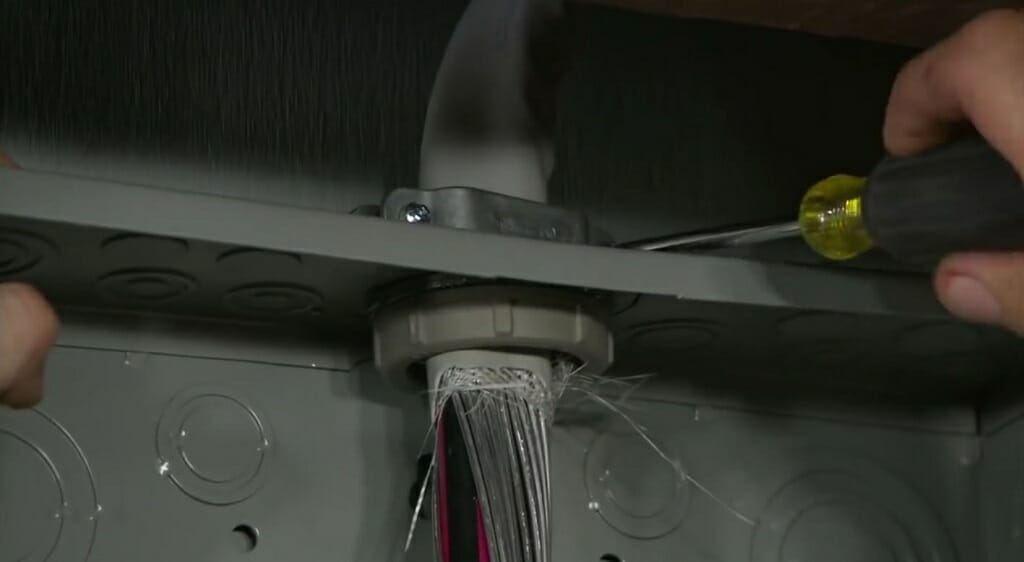
Use conduit to run the main cable to the sub-panel. Next, mount the sub panel on the pre-selected location.
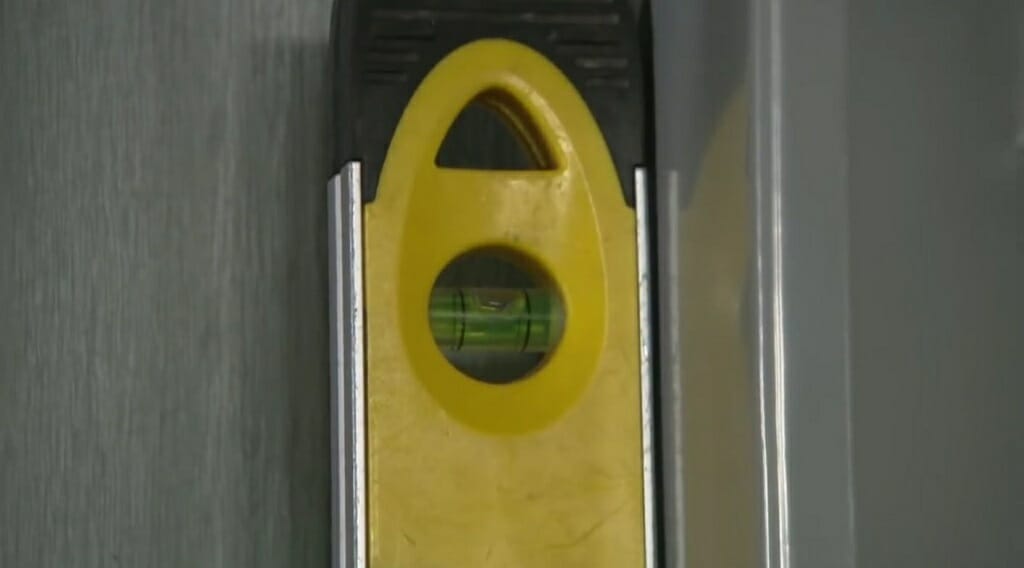
Get the spirit level and level the sub-panel. Tighten the screw and install the sub-panel.
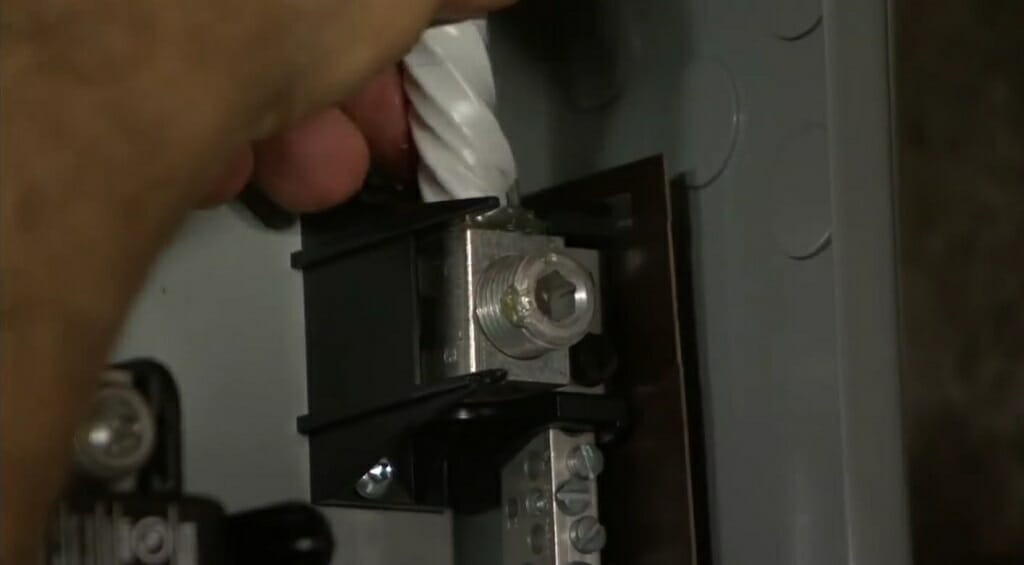
Then, connect the neutral wire to the neutral bus bar.
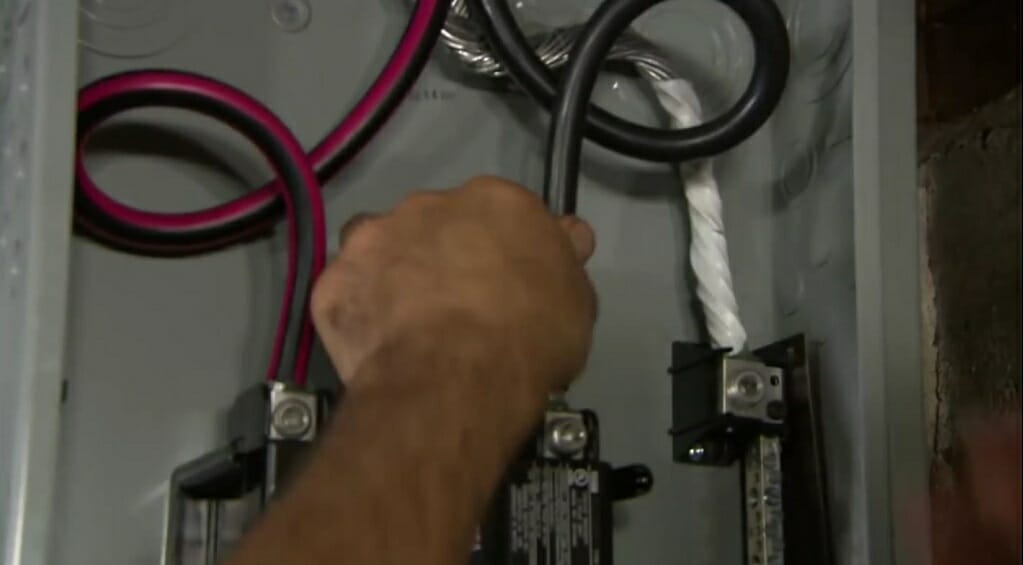
Connect the remaining two power wires to the sub-panel.
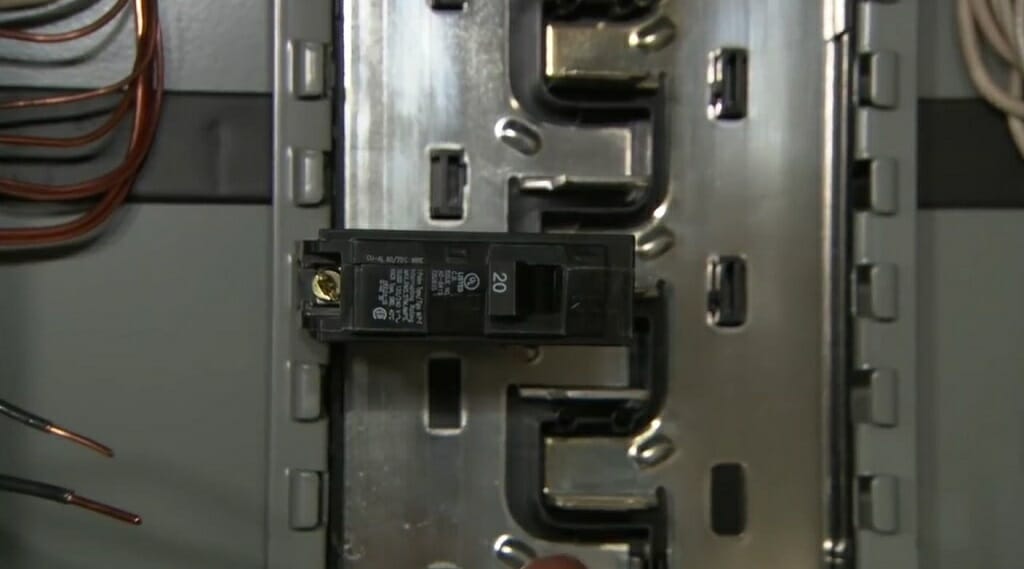
After that, connect the breakers to the sub-panel.
How to Choose Breakers by Using Your Load Calculation?
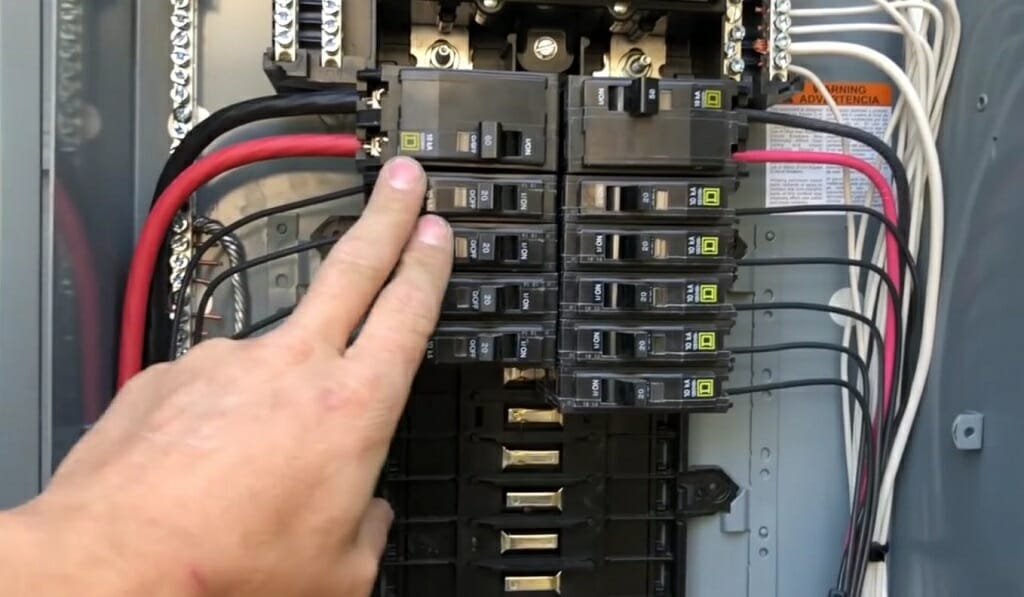
If you are going to install a sub panel, you must have a good understanding of load calculation. The load calculation helps us determine the amperage of the sub-panel and breakers. Follow the below example.
Your basement is 500 ft2, and you plan to install the following electrical devices in your unfinished basement. The wattage is given for all the devices. (1)
- For lights (10 incandescent bulbs) = 600W
- For Outlets = 3000W
- For other appliances = 1500W
Total wattage = 5100W
According to the Joule’s law,
Amps = Watts/Volts
If we assume the voltage is 240V,
Total amperage of the outlets = 3000W/240V = 12.5A
Total amperage of the lights = 600W/240V = 2.5A
Total amperage of the other appliances = 1500W/240V = 6.25A
Total amps = 5100/240 = 21.25A
For the above electrical devices, you’ll need approximately 22 amps. So, the 100A sub-panel is more than enough. But what about the breakers?
Before Choosing a breaker, determine the number of circuits your basement needs. For this demonstration, assume the number of the circuit as three (one for lights, one for outlets, and one for other devices).
When you use a breaker, you shouldn’t use its maximum capacity. Even though a 20 amp breaker is capable of delivering 20A, the recommended level is below 80%.
Therefore, if we use the 20A breaker:
Recommend maximum load for 20A breaker = 20 × 80% = 16A
So, it is safe to use 20A breakers for a circuit that pulls below 16A.
For outlets, choose a 20A breaker. For lights and other devices, use two 15A or 10A breakers.
Keep in mind: Depending on your basement’s load calculation, the above breaker amperage, and the number of circuits might vary. If you are not comfortable with such calculations, feel free to contact an experienced electrician.
Step 3 – Start the Wiring Process
After installing the sub-panel and the circuit breakers, run the wires inside your basement. First, pick wires that have the correct gauges.
Here we are using 20 amp breakers, so use 12 or 10 gauge wires. For 15 amp breakers, use 14 gauge wires. And for 10 amp breakers, use 16 gauge wires.
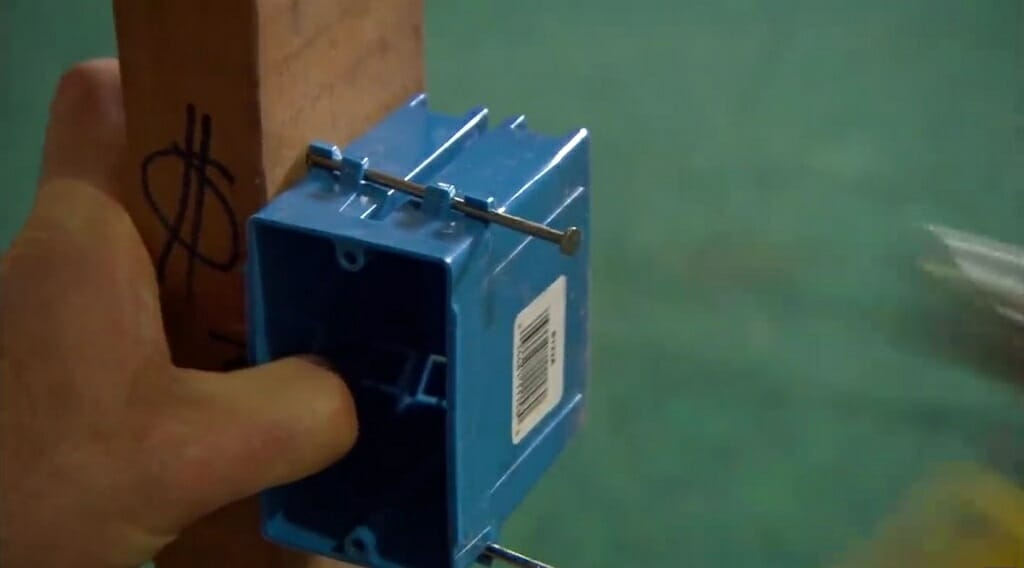
Complete the wiring section by section. Rather than drilling the studs, it is easy to place electrical boxes on the stud.
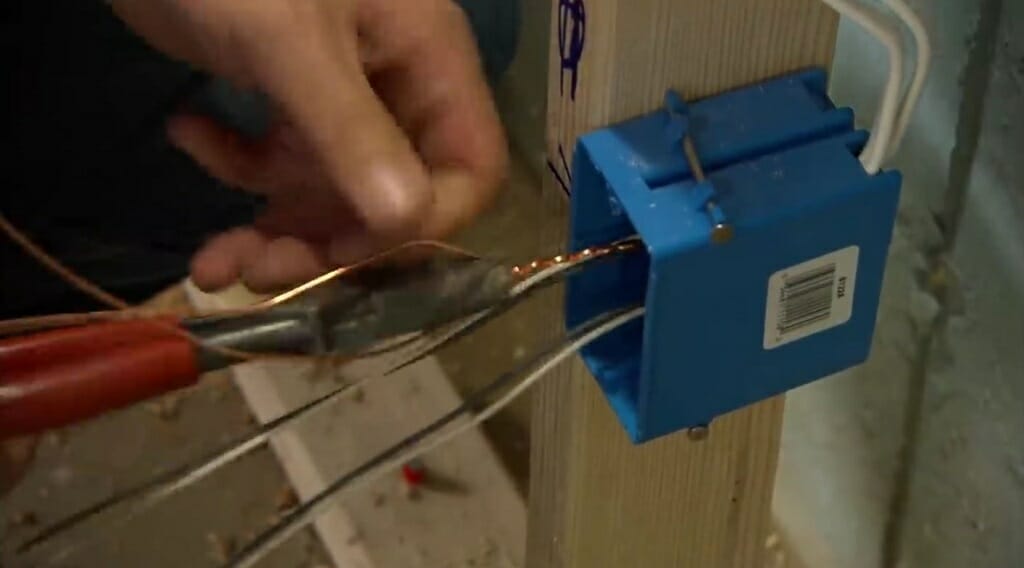
So, remove the screws that are holding the electrical box cover. Insert the wires into the box and send them through the previously drilled hole on the drywall. Next, install the electrical box on the wall or the stud by tightening the screws.
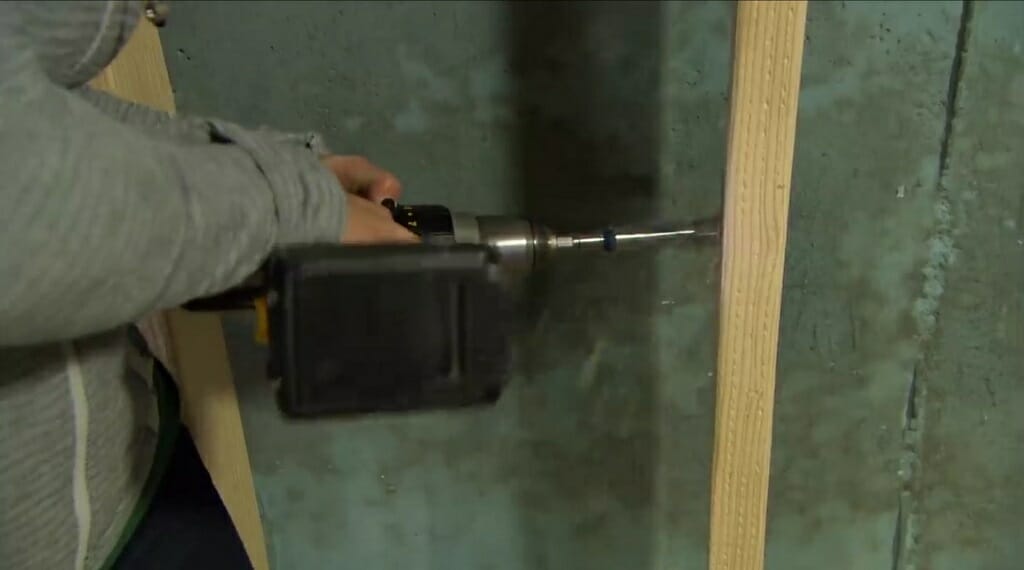
Drill more holes on the drywall and the studs until you reach the sub-panel. Follow the same procedure for all the electrical boxes.
Tip: Always drill holes in a straight line and avoid drilling plumbing or other wiring located behind the wall.
Step 4 – Install J Hooks and Bend the Cables
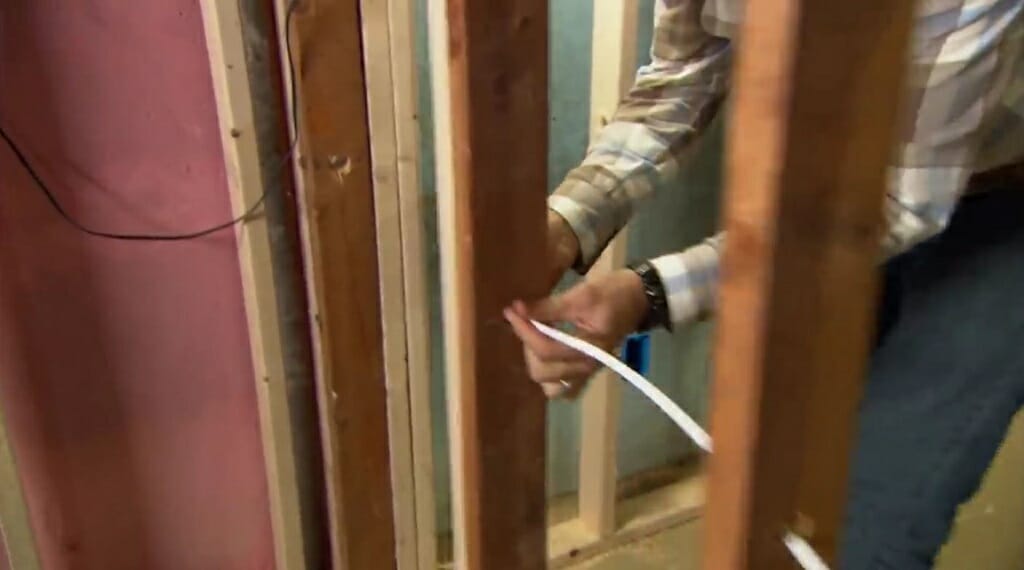
Now send the wires from the 1st electrical box to the 2nd box. And then the 3rd one. Follow this pattern until you reach the sub-panel. When you run these wires, use J hooks for each end. For instance, you can use the stud finder to mark each side of the studs. For one line, two J hooks are enough. To install a J hook, screw it to the wall using a screwdriver. While running the wires, you might have to bend the wires at corners.
Keep in mind: During the wiring process, install the ground wires for all connections.
Step 5 – Staple the Cable Near Boxes
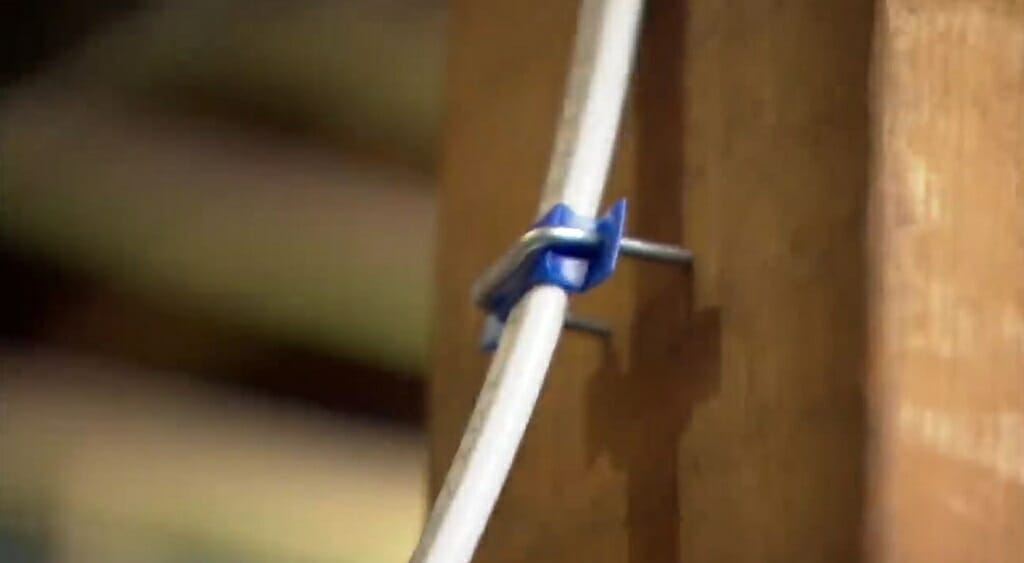
After running the wires from the electrical boxes to the sub-panel, you should tighten the wires near the boxes using staples. And remember to do this for all the electrical boxes. Secure the wires within six inches from the box.
Step 6 – Run the Wires On the Ceiling
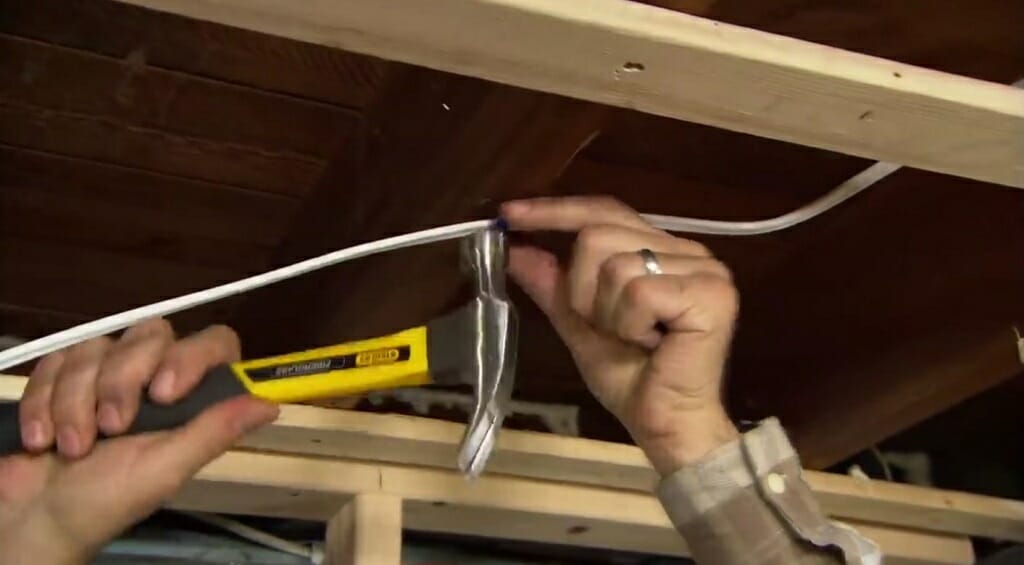
You’ll have to run the wires on the roof beams or wall plates for light fixtures. You can easily staple the wires onto the beams. If needed, drill the beams. Follow the same procedure that you followed during the electrical box wiring. Do the same for the other electrical devices.
Step 7 – Install All the Electrical Devices
Next, install all the light fixtures, switches, outlets, and other electrical devices. If you use a single-phase circuit, connect the power wire, phase wire, neutral wire, and ground to the electrical boxes. In a three-phase circuit, there are three power wires.
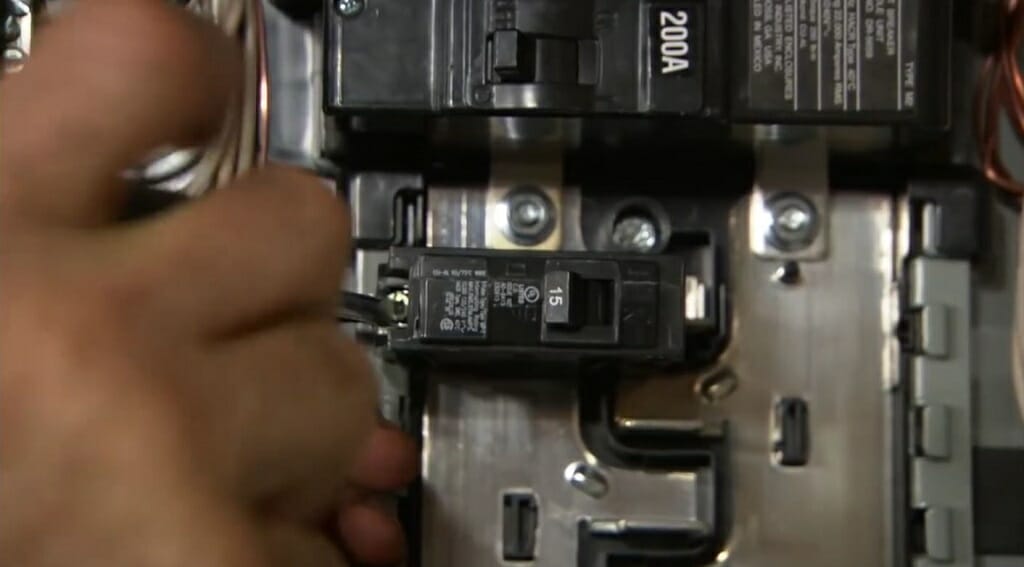
After connecting all the devices, connect all the wires to the breakers.
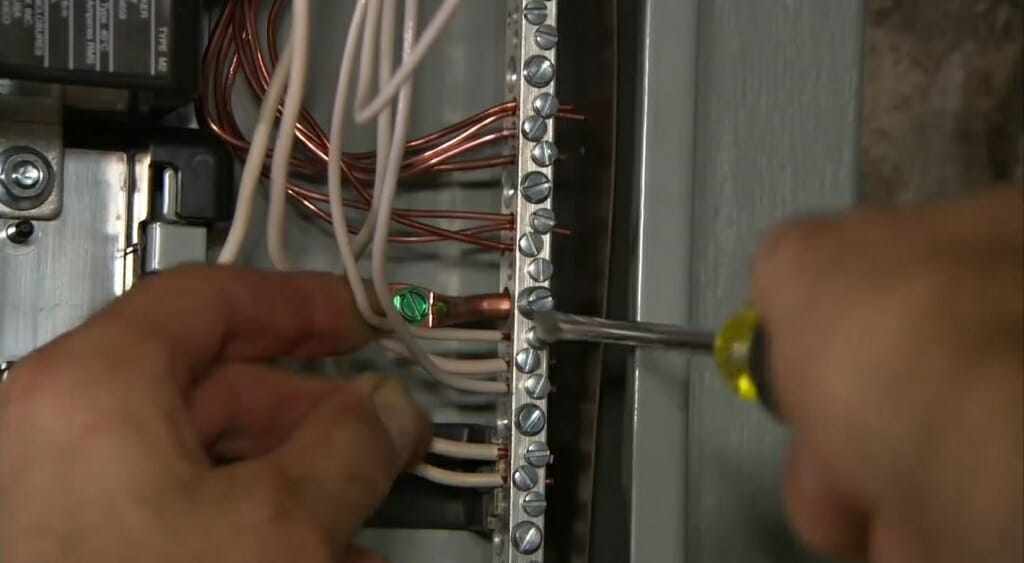
Connect the neutral wires to a neutral bus bar and the ground wires to the ground bar. During this step, remember to turn off the main breaker.
Step 8 – Maintain the Wiring
If you follow the above steps correctly, you won’t have any trouble during the above process. However, this is an unfinished basement, so check and maintain the wiring regularly. If you detect any issues, fix them as soon as possible.
Wrapping Up
The above eight-step guide is the best way to wire unfinished basements. However, if you are uncomfortable with such tasks, don’t hesitate to hire an electrician. (2)
On the other hand, if you are willing to go through the process, remember to follow the necessary safety precautions.
Take a look at some of our related articles below.
- What size wire for 30 amps 200 feet
- How to run wire through walls horizontally
- How to remove wire from push-in connector
References
(1) basement – https://www.houzz.com/photos/basement-ideas-phbr0-bp~t_747
(2) hire an electrician – https://www.forbes.com/advisor/home-improvement/how-to-hire-an-electrician/
Video References
Bring Back The Farm
This Old House
This Old House
Electrician U
